Flexibility Analysis for Multi-Energy Microgrid and Distribution System Operator under a Distributed Local Energy Market Framework
Abstract
1. Introduction
1.1. Motivation and Aims
1.2. Literature Review
1.3. Contribution and Innovations
- Providing a new model of energy scheduling for multi-energy microgrids under the employment of a demand-response program for changeable and shiftable loads;
- Providing new indexes to quantitatively evaluate the flexibility of prosumers under market negotiations;
- Analysis of the operation schedule, market-clearing process, and energy-trading negotiations from the flexibility point of view;
- Providing an integrated demand-response program model for combined heat and power loads.
1.4. Paper Arrangement
2. Operation Scheduling
2.1. Multi-Energy Microgrid
2.1.1. Objective Function
2.1.2. Constraints
- a.
- CHP
- b.
- Microturbine
- c.
- Heat Pump
- d.
- Boiler
- e.
- Electrical Energy Storage
- f.
- Thermal Energy Storage
- g.
- Demand-Response Program
- h.
- Energy Trading with DSO
- i.
- Power Equality
2.2. Distribution System
2.2.1. Objective Function
2.2.2. Problem Constraints
2.3. Solution Approach
2.3.1. Centralized Model
2.3.2. Distributed Model of Market Negotiation
- a.
- The upstream problem for MEMGs
- b.
- The sub-problem on the DSO side
| Algorithm 1. Proposed distributed solution approach. | ||
| Synchronous Distributed Algorithm | ||
| 1 | Start: | K = 0, |
| 2 | Repeat | |
| 3 | At each individual MEMG | |
| 4 | Repeat | |
| 5 | Wait | |
| 6 | Until receive update from DSO (1) solve local problem in (39) for optimal solution | |
| 7 | (2) send to the DS | |
| 8 | At the DSO | |
| 9 | Repeat | |
| 10 | Wait | |
| 11 | Until receive update from all MEMGs (1) solve problem (40) for optimal solution (2) update dual variables (42): | |
| 12 | (3) Send to all microgrids | |
| 13 | ||
| 14 | Until a stopping criterion is met Equation (43) | |
2.4. Flexibility Index
3. Numerical Results
3.1. Case Study
3.2. Simulation Result
3.2.1. Power Flexibility Index Analysis
3.2.2. Energy-Flexibility Index Analysis
3.2.3. Proposed Shiftable and Changeable DRP Model
3.2.4. Convergency and Flexibility
3.2.5. Operation Scheduling and Market-Clearing Results
4. Conclusions
Author Contributions
Funding
Data Availability Statement
Conflicts of Interest
Nomenclature
| Indexes | |
| i | Indexes of MEMGs in distribution system |
| t | Indexes of time periods, hour |
| b/bp | Indexes of buses |
| Sets of connections for MEMGs and buses | |
| Sets of buses that are connected to DG | |
| Sets of all branches that are between bus bp and k | |
| Scalars | |
| M | A big number |
| ρ | Penalty coefficient |
| Parameter | |
| at time t, kW, kvar, kW | |
| at time t, kW | |
| , | Active/Reactive power consumed at bus b of distribution system at time t, kW, kvar |
| Resistance/Reactance of a line connecting bus b and bp, ohm | |
| Maximum/Minimum Voltage limit, kV | |
| Forecasted TSO price for energy trading with DSO at time t, ¢/kW·h | |
| Forecasted Natural Gas price at time t, ¢/Btu.h | |
| Cost of energy generation for DG of bus b (¢/kW·h) | |
| Start-Up/ Shout-down cost of CHP unit i, ¢ | |
| Efficiency of CHP unit i,% | |
| Feasible operation region of a CHP plant, kW | |
| Maximum electrical capacity of MT unit i, kW | |
| Efficiency of MT unit i, % | |
| Maximum Charge/Discharge power of EES, kW | |
| Maximum/Minimum Electric quantity of EES during time t, kW·h | |
| Charge/Discharge efficiency of EES i, % | |
| Maximum thermal capacity power of boiler i, kW | |
| Efficiency of Boiler i, % | |
| Maximum thermal power of Heat Pump i, kW | |
| Efficiency of Heat Pump i, % | |
| Maximum Charge/Discharge thermal power of TES, kW | |
| Charge/Discharge efficiency of TES unit, % | |
| Index of flexibility for power trading of MEMG i at time t | |
| Index of flexibility for energy trading of MEMG i | |
| Positive Variables | |
| Electrical power of DSO for power trading with TSO at time t, kW | |
| Active power generation of CHP unit i at time t, kW | |
| Heat power generation of CHP unit i at time t, kW | |
| Start-Up/ Shout-down cost of CHP unit i at time t, ¢ | |
| Cost of CHP unit i at time t, ¢ | |
| Total cost of CHP unit i, ¢ | |
| Active power generation of MT unit i at time t, kW | |
| Cost of MT unit i at time t, ¢ | |
| Total cost of MT unit i, ¢ | |
| Charge/Discharge power of EES unit i at time t, kW | |
| Electric quantity of EES i at time t, kW·h Heat power generation of Boiler i at time t, kW | |
| Cost of Boiler i at time t, ¢ | |
| Total cost of Boiler i, ¢ | |
| Heat power generation of Heat Pump i at time t, kW | |
| Electrical power consumed by Heat Pump i at time t, kW | |
| Charge/Discharge thermal power of TES unit i at time t, kW | |
| Electric quantity of TES during time t, kW·h | |
| Voltage magnitude at bus b at time t, kV | |
| Power generation of DG unit of bus b at time t, kW | |
| Cost of DG generations for DSO, ¢ | |
| Free Variables | |
| at time t, kW·h | |
| Reactive power trading of DSO with TSO at bus b and time t, kvar | |
| Active/Reactive power flowing between branch of bus b and bp at time t, kW/kvar | |
| Revenue of energy trading with MGs for DSO, ¢ | |
| Revenue of energy trading with TSO for DSO, ¢ | |
| Total revenue of DSO in operation planning, ¢ | |
| Revenue of of energy trading with DSO at time t, ¢ | |
| in operation planning, ¢ | |
| Binary Variable | |
| Binary variable for CHP unit i at time t (0 for off status and 1 for on status) | |
| Binary variable for EES/TES unit i at time t (1 for charging status and 0 for discharging status) | |
| Global variable | |
| at time t, ¢/kW·h | |
| at time t, kW | |
| Electrical power-trading schedule of DSO at time t at bus , kW | |
References
- Wu, R.; Sansavini, G. Active Distribution Networks or Microgrids? Optimal Design of Resilient and Flexible Distribution Grids with Energy Service Provision. Sustain. Energy Grids Netw. 2021, 26, 100461. [Google Scholar] [CrossRef]
- Sahebi, A.; Jadid, S. A Robust Model of Local Energy Market under a Security Constraint-Based Approach for Distribution System Operator and Multi-Energy Microgrids. Electr. Power Syst. Res. 2023, 217, 109164. [Google Scholar] [CrossRef]
- Papazoglou, G.K.; Forouli, A.A.; Bakirtzis, E.A.; Biskas, P.N.; Bakirtzis, A.G. Day-Ahead Local Flexibility Market for Active and Reactive Power with Linearized Network Constraints. Electr. Power Syst. Res. 2022, 212, 108317. [Google Scholar] [CrossRef]
- Ma, J.; Silva, V.; Belhomme, R.; Kirschen, D.S.; Ochoa, L.F. Evaluating and Planning Flexibility in Sustainable Power Systems. IEEE Trans. Sustain. Energy 2013, 4, 200–209. [Google Scholar] [CrossRef]
- Oree, V.; Sayed Hassen, S.Z. A Composite Metric for Assessing Flexibility Available in Conventional Generators of Power Systems. Appl. Energy 2016, 177, 683–691. [Google Scholar] [CrossRef]
- Mouton, D.; Mararakanye, N.; Bekker, B. Assessment of Methods to Measure Power System Flexibility: A Review. In Proceedings of the 2021 56th International Universities Power Engineering Conference: Powering Net Zero Emissions, UPEC 2021, Middlesbrough, UK, 31 August–3 September 2021. [Google Scholar]
- Ulbig, A.; Andersson, G. Analyzing Operational Flexibility of Electric Power Systems. Int. J. Electr. Power Energy Syst. 2015, 72, 155–164. [Google Scholar] [CrossRef]
- Minniti, S.; Haque, N.; Nguyen, P.; Pemen, G. Local Markets for Flexibility Trading: Key Stages and Enablers. Energies 2018, 11, 3074. [Google Scholar] [CrossRef]
- Yang, Z.; Hu, J.; Ai, X.; Wu, J.; Yang, G. Transactive Energy Supported Economic Operation for Multi-Energy Complementary Microgrids. IEEE Trans. Smart Grid 2021, 12, 4–17. [Google Scholar] [CrossRef]
- Chen, J.J.; Qi, B.X.; Rong, Z.K.; Peng, K.; Zhao, Y.L.; Zhang, X.H. Multi-Energy Coordinated Microgrid Scheduling with Integrated Demand Response for Flexibility Improvement. Energy 2021, 217, 119387. [Google Scholar] [CrossRef]
- Löschenbrand, M. A Transmission Expansion Model for Dynamic Operation of Flexible Demand. Int. J. Electr. Power Energy Syst. 2021, 124, 106252. [Google Scholar] [CrossRef]
- Shekari, T.; Gholami, A.; Aminifar, F. Optimal Energy Management in Multi-Carrier Microgrids: An MILP Approach. J. Mod. Power Syst. Clean Energy 2019, 7, 876–886. [Google Scholar] [CrossRef]
- Karimi, H.; Jadid, S. Optimal Energy Management for Multi-Microgrid Considering Demand Response Programs: A Stochastic Multi-Objective Framework. Energy 2020, 195, 116992. [Google Scholar] [CrossRef]
- Shen, Z.; Wu, L.; Sedgh, S.A.; Radmehr, F. Optimal Operation Scheduling of a Microgrid Using a Novel Scenario-Based Robust Approach. Eng. Optim. 2023, 22. [Google Scholar] [CrossRef]
- Bolfek, M.; Capuder, T. An Analysis of Optimal Power Flow Based Formulations Regarding DSO-TSO Flexibility Provision. Int. J. Electr. Power Energy Syst. 2021, 131, 106935. [Google Scholar] [CrossRef]
- Vijay, R.; Mathuria, P. Complex Power Flexibility Evaluation Using Energy Arbitrage between Transmission and Distribution. Electr. Power Syst. Res. 2022, 203, 107641. [Google Scholar] [CrossRef]
- Kumamoto, T.; Aki, H.; Ishida, M. Provision of Grid Flexibility by Distributed Energy Resources in Residential Dwellings Using Time-of-Use Pricing. Sustain. Energy Grids Netw. 2020, 23, 100385. [Google Scholar] [CrossRef]
- Yi, Z.; Xu, Y.; Wu, C. Improving Operational Flexibility of Combined Heat and Power System through Numerous Thermal Controllable Residents Aggregation. Int. J. Electr. Power Energy Syst. 2021, 130, 106841. [Google Scholar] [CrossRef]
- Babagheibi, M.; Jadid, S.; Kazemi, A. Distribution Locational Marginal Pricing for Congestion Management of an Active Distribution System with Renewable-Based Microgrids under a Privacy-Preserving Market Clearing Approach and Load Models. Sustain. Energy Grids Netw. 2022, 32, 100935. [Google Scholar] [CrossRef]
- Bahramara, S.; Parsa Moghaddam, M.; Haghifam, M.R. A Bi-Level Optimization Model for Operation of Distribution Networks with Micro-Grids. Int. J. Electr. Power Energy Syst. 2016, 82, 169–178. [Google Scholar] [CrossRef]
- Zhang, H.; Zhang, S.; Hu, X.; Cheng, H.; Gu, Q.; Du, M. Parametric Optimization-Based Peer-to-Peer Energy Trading among Commercial Buildings Considering Multiple Energy Conversion. Appl. Energy 2022, 306, 118040. [Google Scholar] [CrossRef]
- Wang, N.; Liu, Z.; Heijnen, P.; Warnier, M. A Peer-to-Peer Market Mechanism Incorporating Multi-Energy Coupling and Cooperative Behaviors. Appl. Energy 2022, 311, 118572. [Google Scholar] [CrossRef]
- Esmat, A.; de Vos, M.; Ghiassi-Farrokhfal, Y.; Palensky, P.; Epema, D. A Novel Decentralized Platform for Peer-to-Peer Energy Trading Market with Blockchain Technology. Appl. Energy 2021, 282, 116123. [Google Scholar] [CrossRef]
- Nguyen, D.H.; Ishihara, T. Distributed Peer-to-Peer Energy Trading for Residential Fuel Cell Combined Heat and Power Systems. Int. J. Electr. Power Energy Syst. 2021, 125, 106533. [Google Scholar] [CrossRef]
- Babagheibi, M.; Sahebi, A.; Jadid, S.; Kazemi, A. An Integrated Design of Heat and Power Market for Energy Hubs Considering the Security Constraints of the System. Sustain. Cities Soc. 2023, 96, 104616. [Google Scholar] [CrossRef]
- Zhao, J.; Zheng, T.; Litvinov, E. A Unified Framework for Defining and Measuring Flexibility in Power System. IEEE Trans. Power Syst. 2016, 31, 339–347. [Google Scholar] [CrossRef]
- Tuohy, A.; Lannoye, E. Metrics for Quantifying Flexibility in Power System Planning; Electric Power Research Institute: Palo Alto, CA, USA, 2014. [Google Scholar]
- Krommydas, K.F.; Dikaiakos, C.N.; Papaioannou, G.P.; Stratigakos, A.C. Flexibility Study of the Greek Power System Using a Stochastic Programming Approach for Estimating Reserve Requirements. Electr. Power Syst. Res. 2022, 213, 108620. [Google Scholar] [CrossRef]
- Gusain, D.; Cvetković, M.; Palensky, P. Quantification of Operational Flexibility from a Portfolio of Flexible Energy Resources. Int. J. Electr. Power Energy Syst. 2022, 141, 107466. [Google Scholar] [CrossRef]
- Karimi, H.; Gharehpetian, G.B.; Ahmadiahangar, R.; Rosin, A. Optimal Energy Management of Grid-Connected Multi-Microgrid Systems Considering Demand-Side Flexibility: A Two-Stage Multi-Objective Approach. Electr. Power Syst. Res. 2023, 214, 108902. [Google Scholar] [CrossRef]
- Gasca, M.V.; Ibáñez, F.; Pozo, D. Flexibility Quantification of Thermostatically Controlled Loads for Demand Response Applications. Electr. Power Syst. Res. 2022, 202, 107592. [Google Scholar] [CrossRef]
- Zhou, Y.; Cao, S. Quantification of Energy Flexibility of Residential Net-Zero-Energy Buildings Involved with Dynamic Operations of Hybrid Energy Storages and Diversified Energy Conversion Strategies. Sustain. Energy Grids Netw. 2020, 21, 100304. [Google Scholar] [CrossRef]
- Alipour, M.; Gharehpetian, G.B.; Ahmadiahangar, R.; Rosin, A.; Kilter, J. Energy Storage Facilities Impact on Flexibility of Active Distribution Networks: Stochastic Approach. Electr. Power Syst. Res. 2022, 213, 108645. [Google Scholar] [CrossRef]
- Wu, Y.K.; Tan, W.S.; Huang, S.R.; Chiang, Y.S.; Chiu, C.P.; Su, C.L. Impact of Generation Flexibility on the Operating Costs of the Taiwan Power System under a High Penetration of Renewable Power. IEEE Trans. Ind. Appl. 2020, 56, 2348–2359. [Google Scholar] [CrossRef]
- Mohandes, B.; El Moursi, M.S.; Hatziargyriou, N.; Khatib, S. El A Review of Power System Flexibility with High Penetration of Renewables. IEEE Trans. Power Syst. 2019, 34, 3140–3155. [Google Scholar] [CrossRef]
- Heydarian-Forushani, E.; Golshan, M.E.H. Quantitative Flexibility Assessment of a Comprehensive Set of Demand Response Programs. Int. J. Electr. Power Energy Syst. 2020, 116, 105562. [Google Scholar] [CrossRef]
- Nazari-Heris, M.; Abapour, S.; Mohammadi-Ivatloo, B. Optimal Economic Dispatch of FC-CHP Based Heat and Power Micro-Grids. Appl. Therm. Eng. 2017, 114, 756–769. [Google Scholar] [CrossRef]
- Hemmati, M.; Abapour, M.; Mohammadi-Ivatloo, B.; Anvari-Moghaddam, A. Optimal Operation of Integrated Electrical and Natural Gas Networks with a Focus on Distributed Energy Hub Systems. Sustainability 2020, 12, 8320. [Google Scholar] [CrossRef]
- Li, R.; Wei, W.; Mei, S.; Hu, Q.; Wu, Q. Participation of an Energy Hub in Electricity and Heat Distribution Markets: An MPEC Approach. IEEE Trans. Smart Grid 2019, 10, 3641–3653. [Google Scholar] [CrossRef]
- Boyd, S.; Parikh, N.; Chu, E.; Peleato, B.; Eckstein, J. Distributed Optimization and Statistical Learning via the Alternating Direction Method of Multipliers. Found. Trends Mach. Learn. 2010, 3, 1–122. [Google Scholar] [CrossRef]
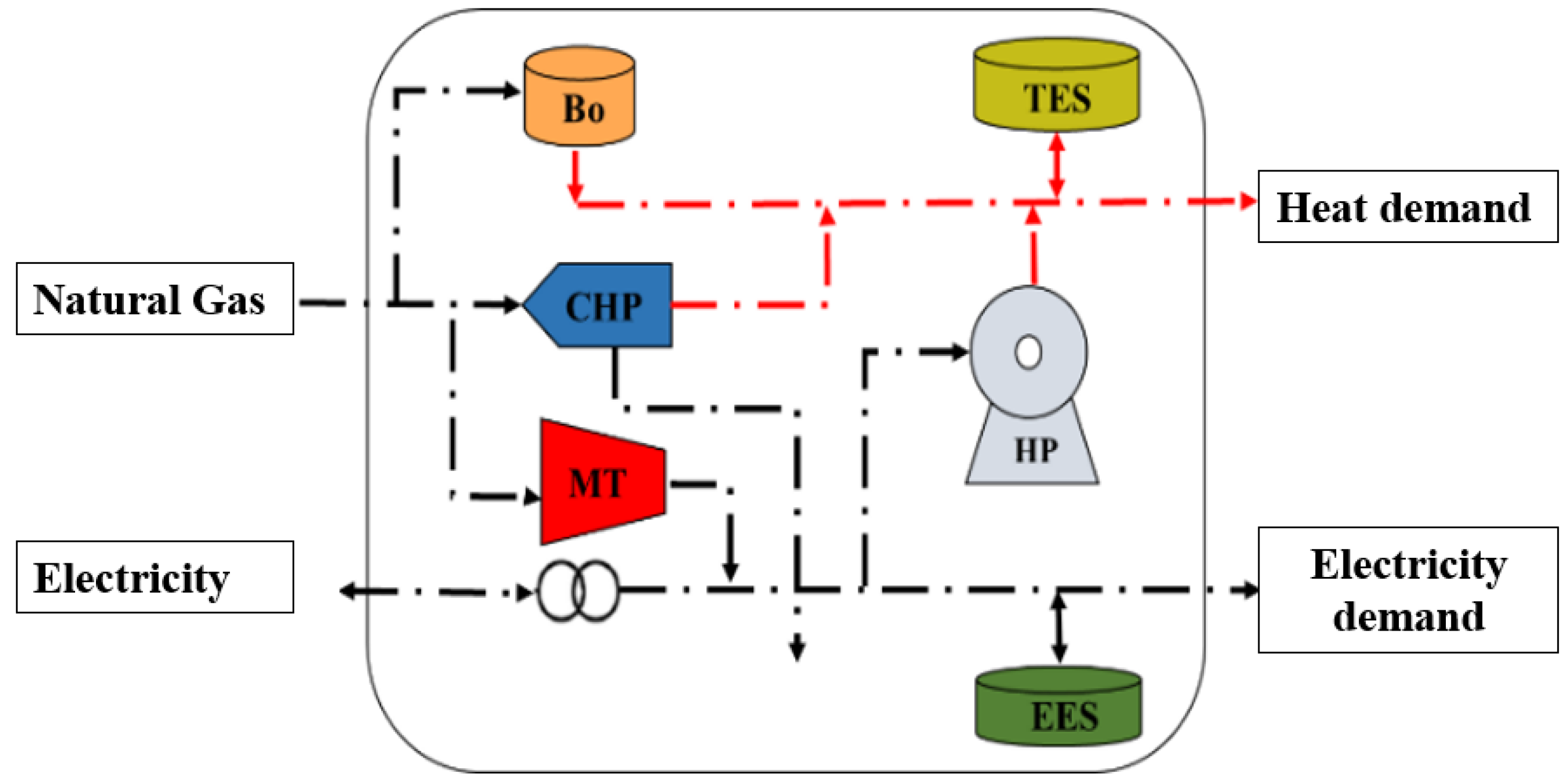
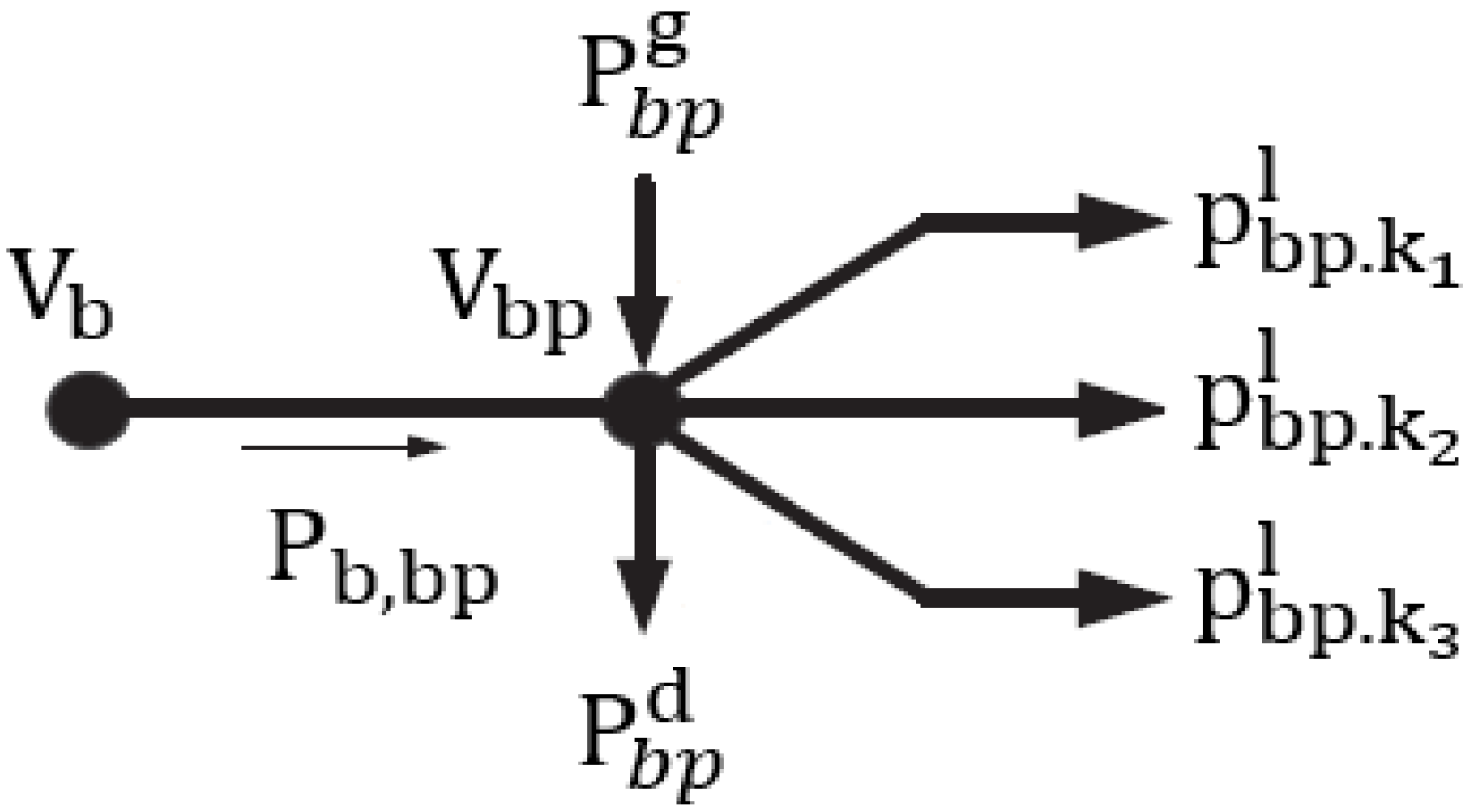

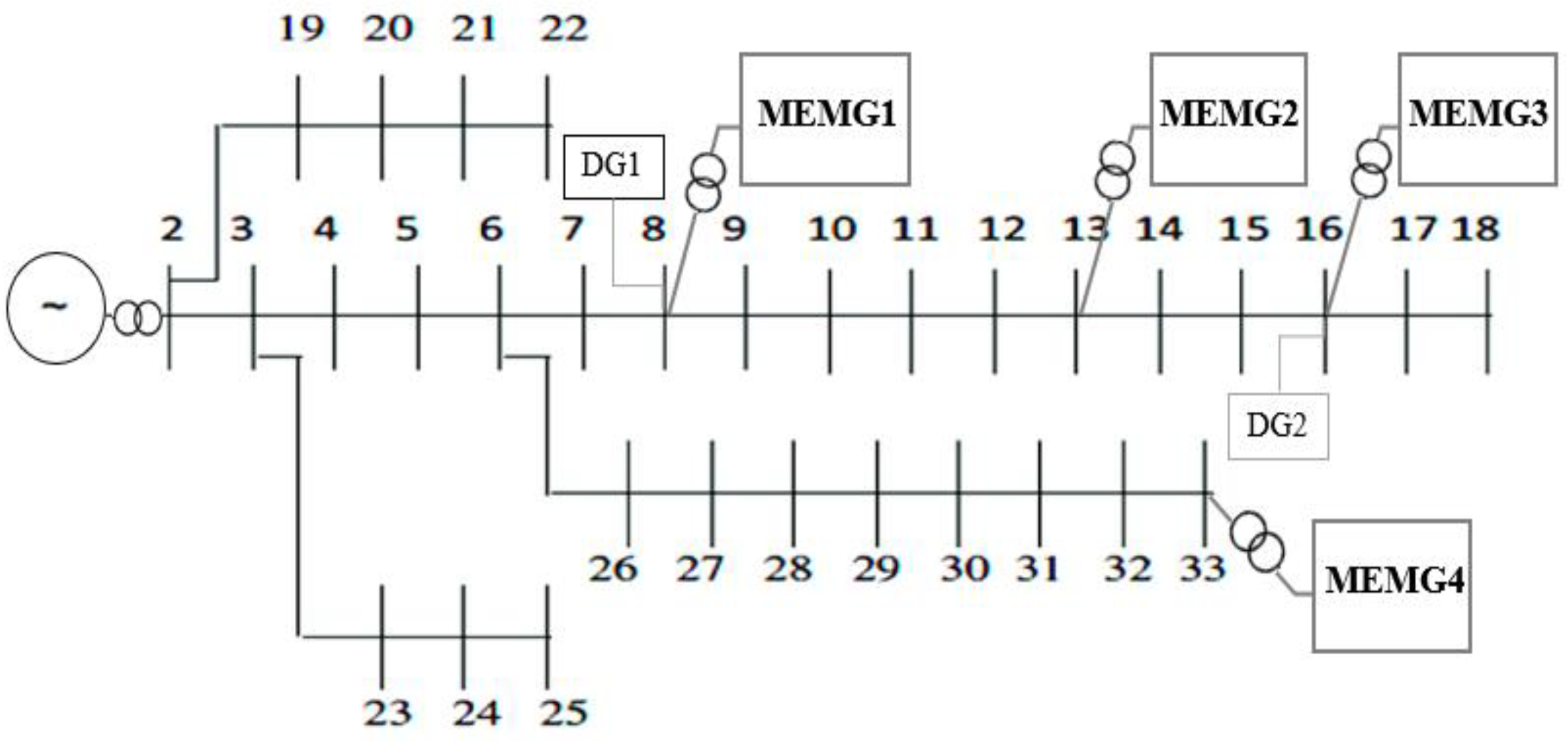
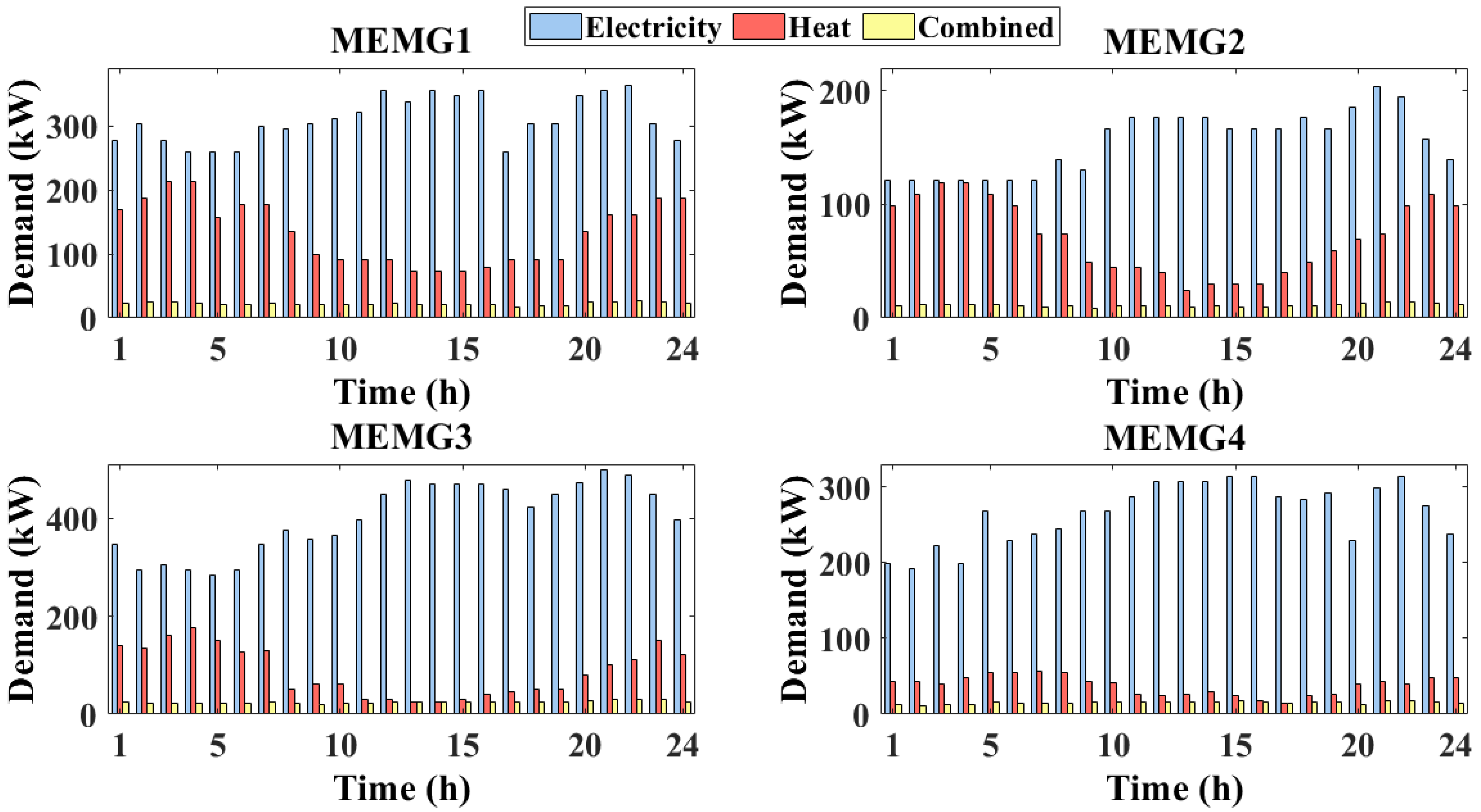

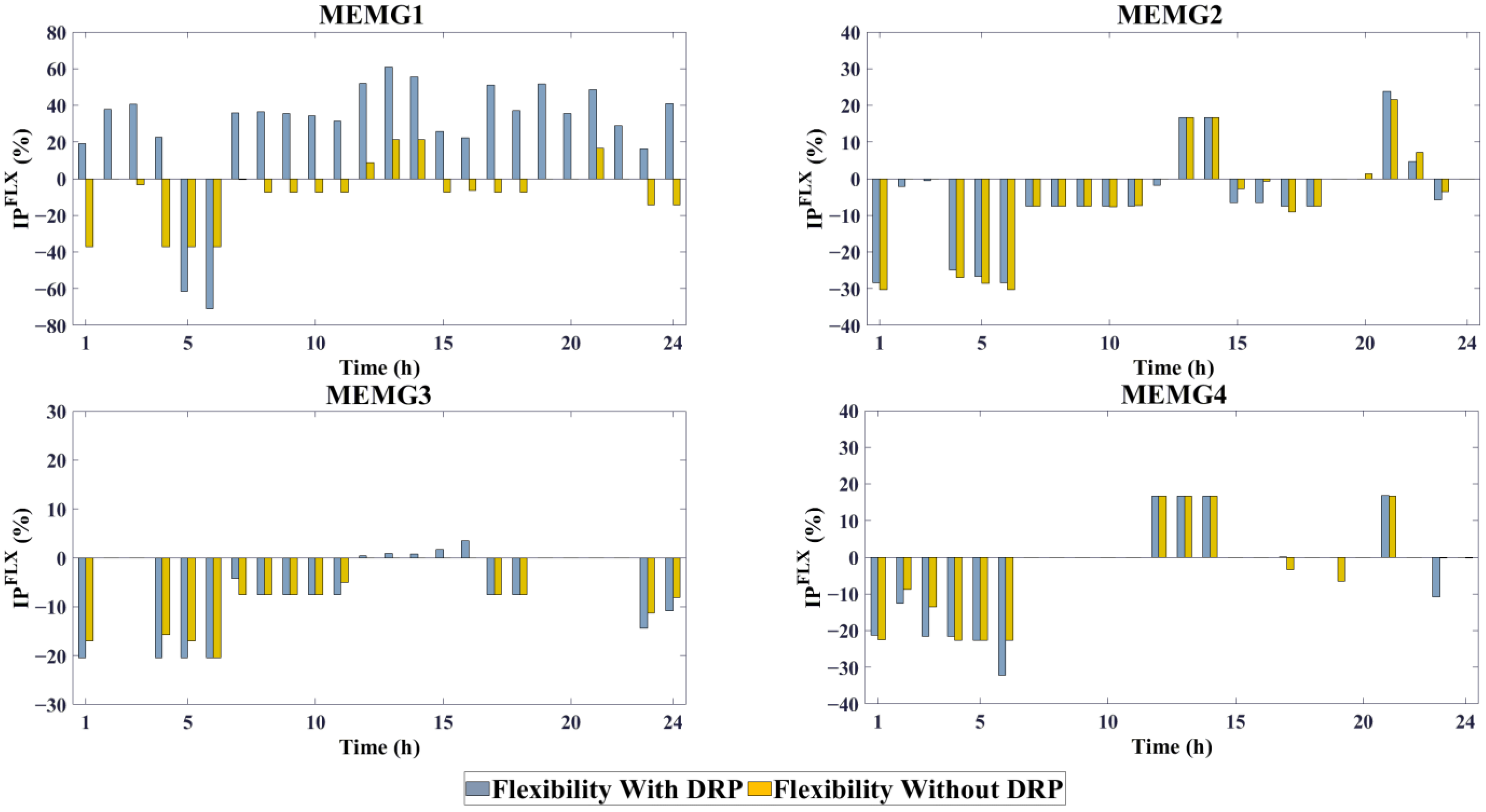
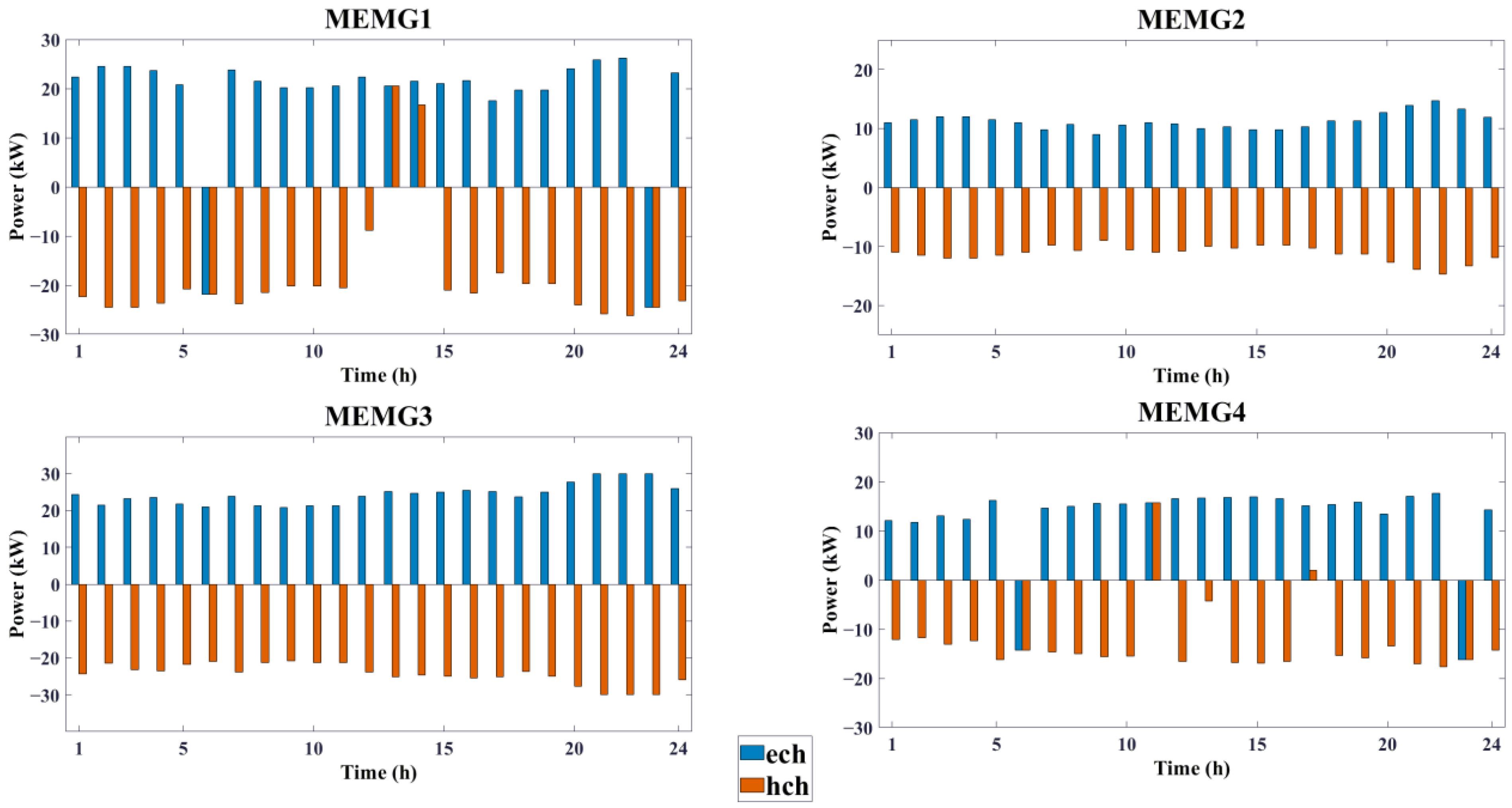
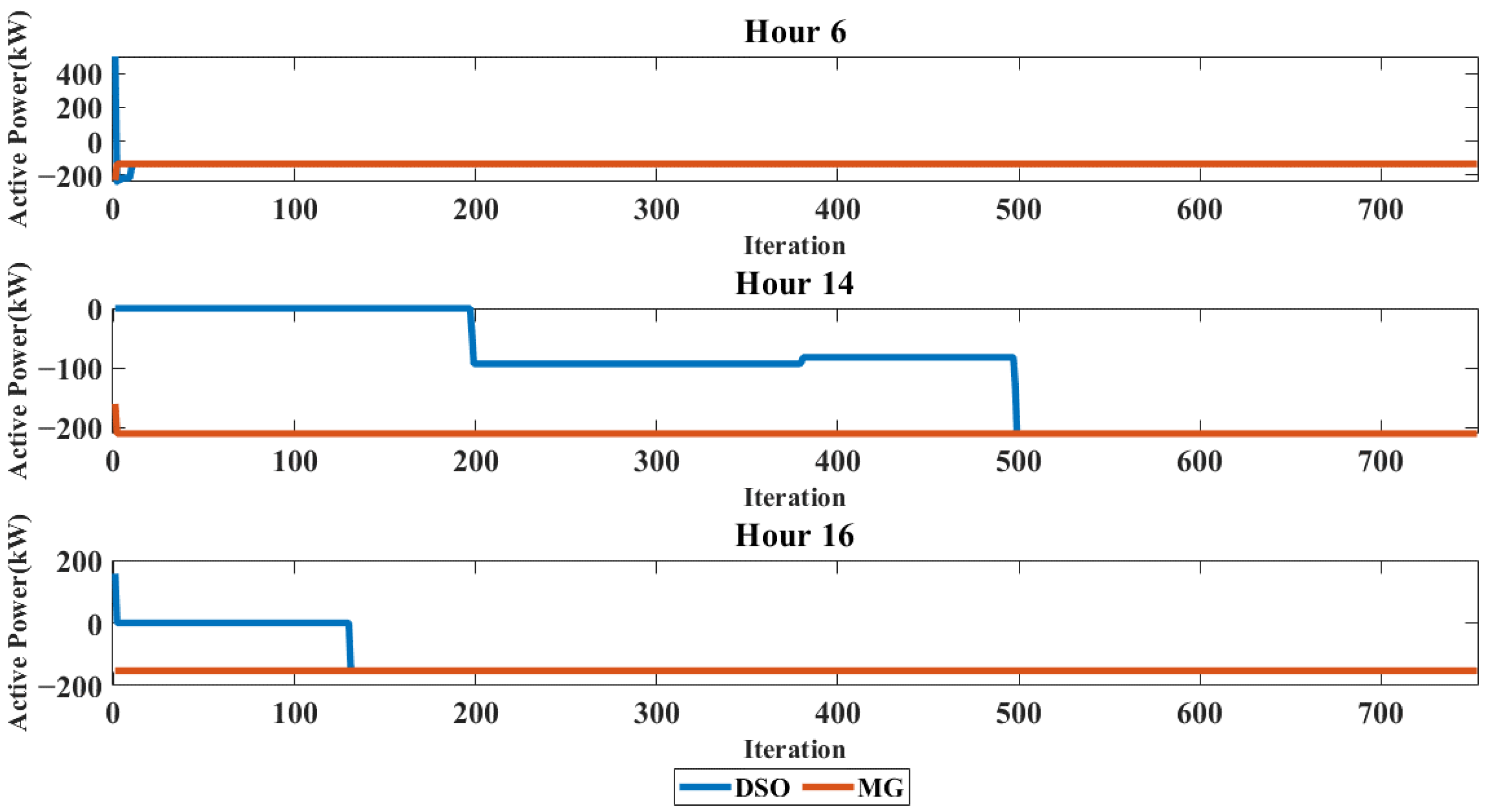
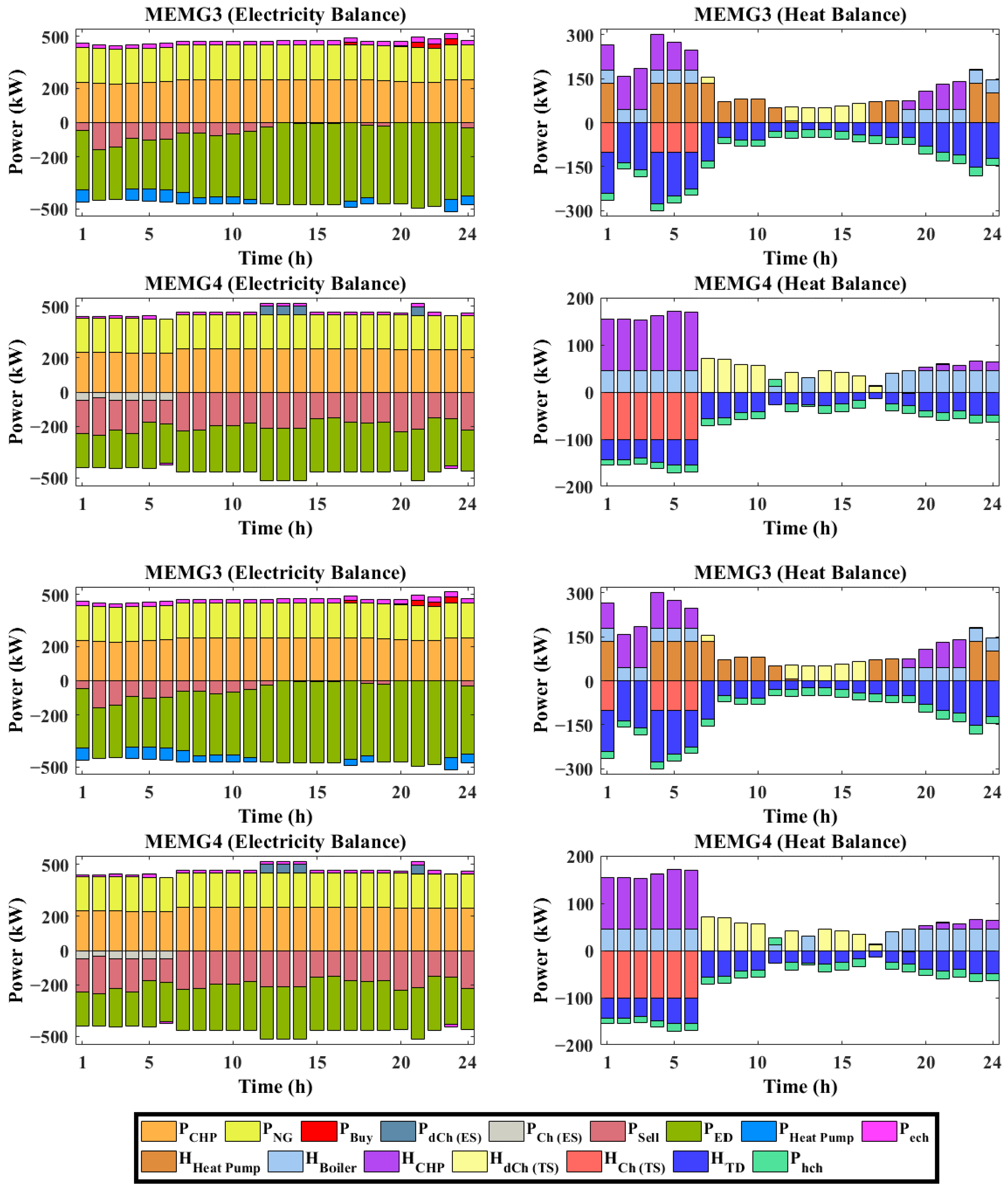
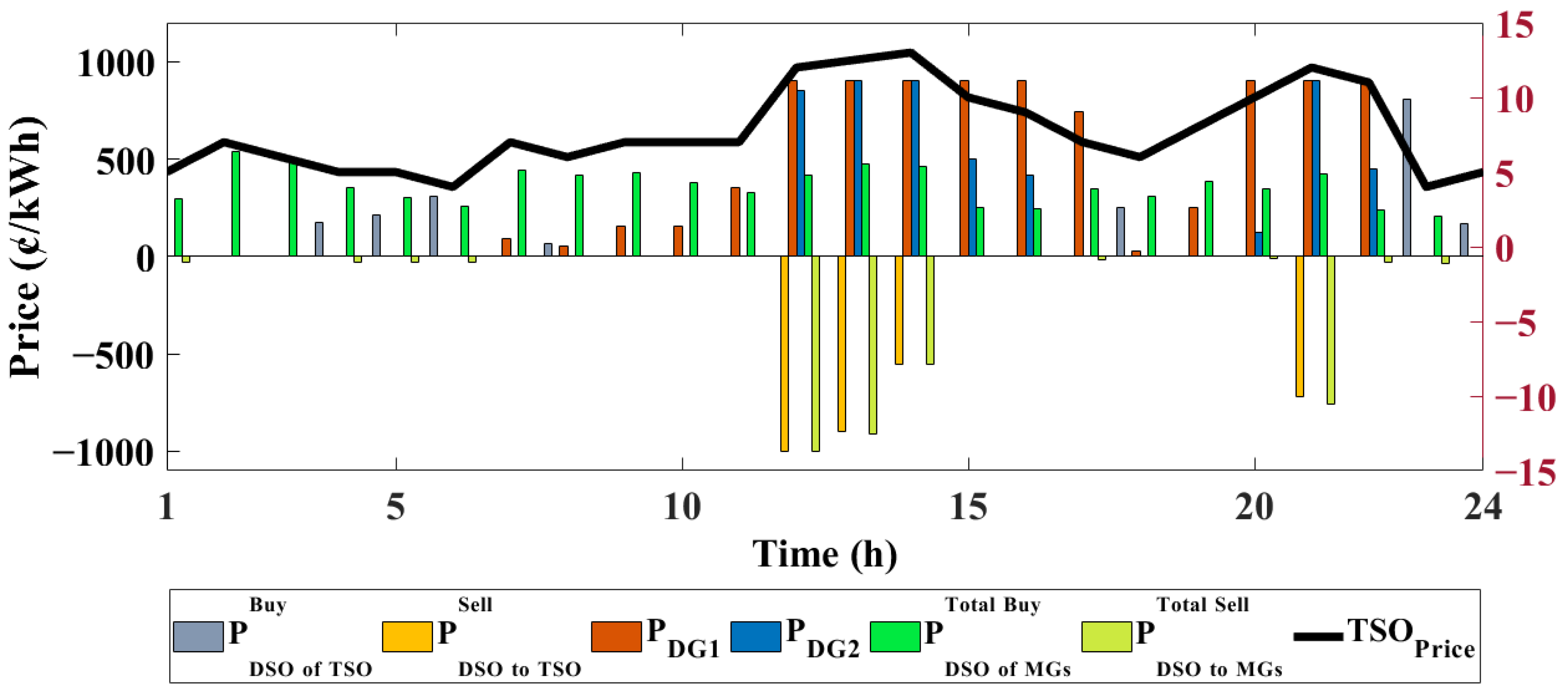
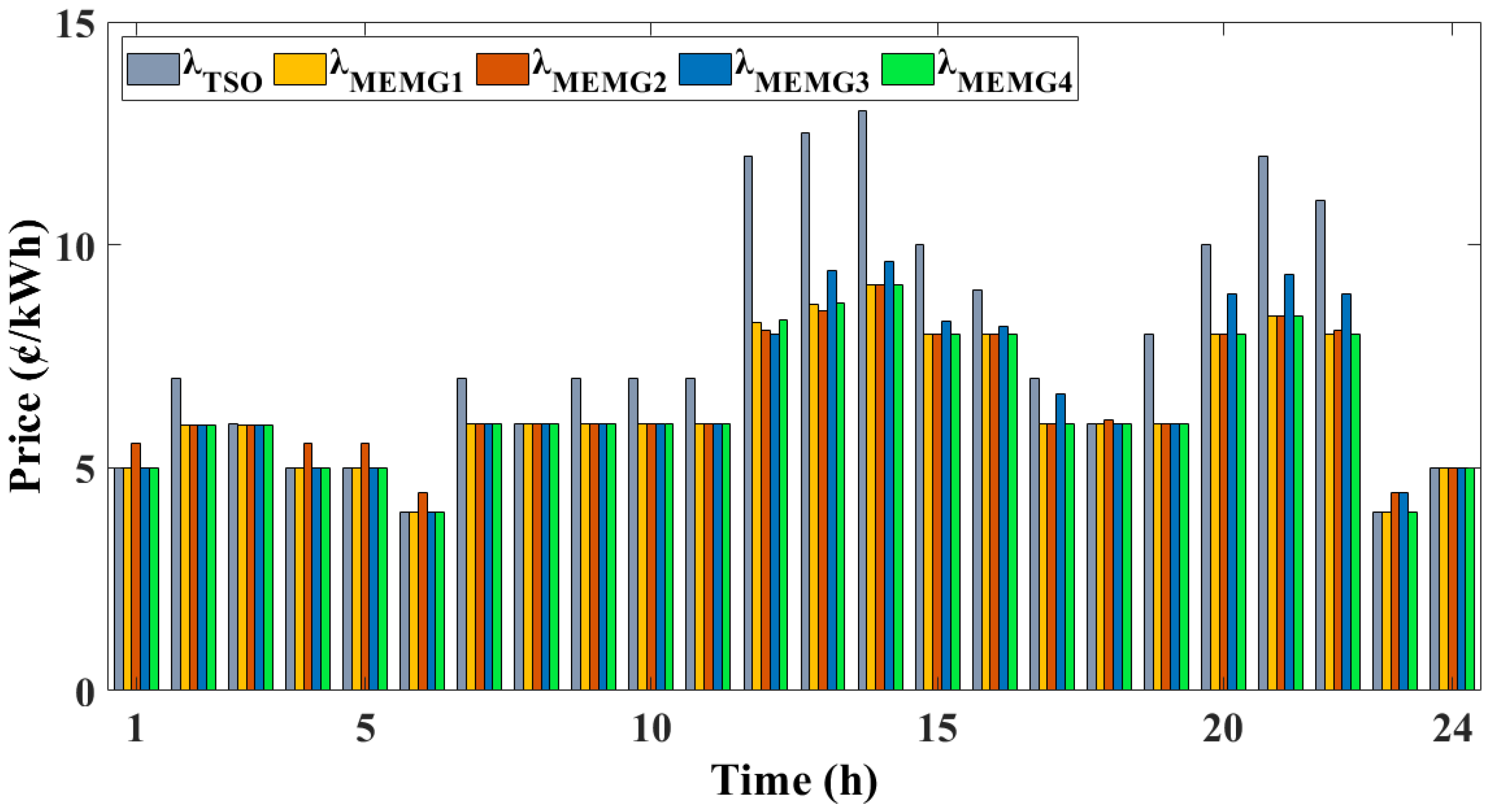
| Index Feature | Properties | Reason | Effects | |
|---|---|---|---|---|
| [4] | Power capacity | Available power and ramp rate | Variability and uncertainty | Comparison of generators |
| [5] | Technical weighted Index | Operational range, ramp rate, start-up and shut-down times, minimum up and down times | Frequent and larger variations in the net load | Comparison of generators |
| [26] | Uncertainty coverage capability | Available power | Uncertainty | Measure the flexibility of power system |
| [27] | Expected unserved ramping | Unserved ramping | Variability and uncertainty | Risk management |
| [28] | Insufficient ramping resource expectation, loss of load expectation, flexibility residual indexes | Ramp rate, loss of load | Load forecast errors | Reserve requirements |
| [29] | Unserved flexibility service | Unserved energy, duration of insufficient flexibility | Renewable generation integration | Design appropriate DRP, formulate operational policies |
| [30] | Flexibility during peak period | Energy flexibility of the demand-response programs | Uncoordinated DRP | Determines the best strategy for operation planning |
| [32] | Electricity-providing capability, time durations of services | Forced flexibility factor, delayed flexibility factor | Advanced energy conversions | Demand side management, control strategy |
| [35] | Response time | Time duration | Generation outage | Contingency analysis |
| C.P | Rescheduling capability | Energy-trading changes/power-trading changes | Evaluation of prosumers’ adoption | Comparison of market participants, market-clearing development |
| MEMG | Component | |||||
|---|---|---|---|---|---|---|
| CHP | MT | HP | Boiler | TES | EES | |
| ✔ | ✔ | ✔ | ✔ | ✔ | ✔ | |
| ✘ | ✔ | ✔ | ✔ | ✔ | ✔ | |
| ✔ | ✔ | ✔ | ✔ | ✔ | ✘ | |
| ✔ | ✔ | ✘ | ✔ | ✔ | ✔ | |
| CHP | |||||
| MT | |||||
| EES | |||||
| TES | = 0.8 | ||||
| Bo | = 45 | ||||
| HP | |||||
| DG | |||||
| TR | |||||
| Value Changes | With DRP | Without DRP | |
|---|---|---|---|
| MEMG1 | 35.83% | 28.65% | −7.18% |
| MEMG2 | −0.37% | −5.10% | −4.73% |
| MEMG3 | −0.38% | −6.20% | −5.82% |
| MEMG4 | −0.80% | −3.23% | −2.43% |
| Average Index Values | 9.34% | 10.79% | 5.04% |
| Improvement | Without DRP | With DRP | |
|---|---|---|---|
| DSO | 0.09% | 133,305 | 133,189 |
| MEMG1 | 7.47% | 24,087 | 22,414 |
| MEMG2 | 6.55% | 13,931 | 13,075 |
| MEMG3 | 6.28% | 35,934 | 33,810 |
| MEMG4 | 10.98% | 10,705 | 9646 |
| Total Cost | 2.75% | 217,964 | 212,133 |
Disclaimer/Publisher’s Note: The statements, opinions and data contained in all publications are solely those of the individual author(s) and contributor(s) and not of MDPI and/or the editor(s). MDPI and/or the editor(s) disclaim responsibility for any injury to people or property resulting from any ideas, methods, instructions or products referred to in the content. |
© 2023 by the authors. Licensee MDPI, Basel, Switzerland. This article is an open access article distributed under the terms and conditions of the Creative Commons Attribution (CC BY) license (https://creativecommons.org/licenses/by/4.0/).
Share and Cite
Sahebi, A.; Jadid, S.; Nazari-Heris, M. Flexibility Analysis for Multi-Energy Microgrid and Distribution System Operator under a Distributed Local Energy Market Framework. Sustainability 2023, 15, 9985. https://doi.org/10.3390/su15139985
Sahebi A, Jadid S, Nazari-Heris M. Flexibility Analysis for Multi-Energy Microgrid and Distribution System Operator under a Distributed Local Energy Market Framework. Sustainability. 2023; 15(13):9985. https://doi.org/10.3390/su15139985
Chicago/Turabian StyleSahebi, Ali, Shahram Jadid, and Morteza Nazari-Heris. 2023. "Flexibility Analysis for Multi-Energy Microgrid and Distribution System Operator under a Distributed Local Energy Market Framework" Sustainability 15, no. 13: 9985. https://doi.org/10.3390/su15139985
APA StyleSahebi, A., Jadid, S., & Nazari-Heris, M. (2023). Flexibility Analysis for Multi-Energy Microgrid and Distribution System Operator under a Distributed Local Energy Market Framework. Sustainability, 15(13), 9985. https://doi.org/10.3390/su15139985









